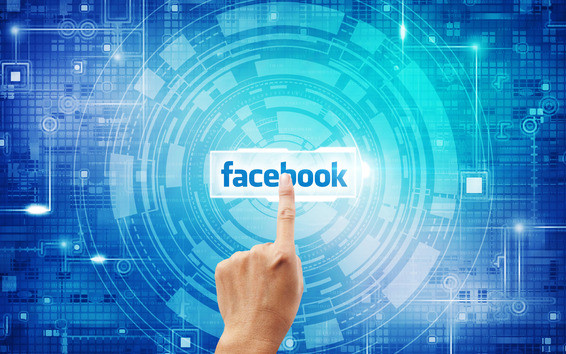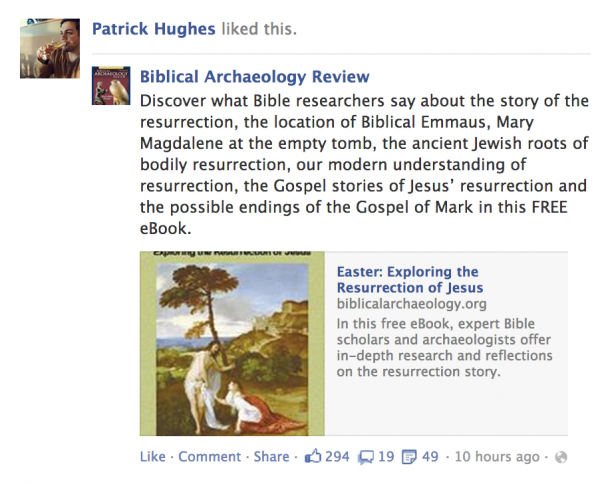
How the Facebook algorithm determines the future of your content
 For the longest time, Google was the main algorithm on our minds. We’d write blog posts, optimize them the best we could, and then hope and pray to the Internet deities that our blog posts would show up favorably in search.
For the longest time, Google was the main algorithm on our minds. We’d write blog posts, optimize them the best we could, and then hope and pray to the Internet deities that our blog posts would show up favorably in search.
It might not seem like Facebook is the type of place that requires a fancy algorithm, but the days of posting whatever you want and getting it seen by everybody who “likes” your page are gone.
Now, Facebook decides who sees what. This algorithm used to be called Facebook Edgerank, but they’ve since retired the name. As business folk, you get it. They’ve been managing the largest social network in the world for ten years now and they have to make money. How do they make money? By making businesses pay to get more visibility.
It seems a bit user-unfriendly, sure. People signed up to get your updates, but Facebook’s algorithm says to them, “Nah, I’m only going to show you the stuff I want to show you.”
So how does Facebook determine what to show you? The true nature of the algorithm is a mystery, and everybody has their own hypotheses … including me. Here’s what I can tell you from looking at the data of several Facebook accounts, many with more than 100,000 fans:
1. Different types of posts get different ranges of visibility
This has been more or less proven and confirmed by experts all around. When I’ve downloaded the Facebook Insights of several different pages, it’s easy to see which types of posts get the most visibility.
Prior to these changes, there was a set standard in place: Plain text posts got the most visibility, then images, then links, then videos. Videos always seemed to get the least visibility, for some reason.
Now, it appears that Facebook has intelligently tweaked this part, too, and visibility all depends on your audience. If your audience typically responds better to image posts, then image posts will get higher visibility. If they respond better to link posts, then link posts will get seen more. In the same way, if your fans typically don’t like and comment on link posts, then Facebook will reduce their visibility.
[text_ad]
2. Fans can change the algorithm
Of course, your fans have the ability to prove them wrong. As soon as your fans start liking and commenting on a post, the visibility of that post goes up. This has always been the case; however, over time it appears to change the base visibility of a certain post type as that post type gets more popular among users.
3. The best thing you can do is get fans to like and comment
If you want your marketing posts to pull better, and your link posts to get clicked, then you must spend time posting other things. Some businesses supplement the in between space with funny photos or memes or caption contests. That’s not only because photos have the highest visibility rate, but because people tend to like and comment on them more.
It sounds a bit silly, but posting fun images in between the posts you want people to click on can increase the overall visibility of all of your posts.
4. Once you reach 100K, the path to your posts is paved in gold
This is just speculation, but for several of our clients, 100,000 fans was the golden ticket to superior visibility. As soon as they reached that threshold, their visibility shot up in varying but drastic degrees. For one of our Mequoda Masters, their Facebook fans are expected to surpass their email subscribers by the end of the year.
5. Every like and comment leads to another like and comment
Before, if you wanted to share a post with your friends, you had to share the post. Now, the “like” of a post means it gets shared in your newsfeed (not your profile) anyway. What does this mean? If you can get a person to “like” a post, a majority of their friends will see the post in their newsfeed. If you get them to comment, same deal.
Let’s take for example, Biblical Archaeology Review, one of our clients who has seen tremendous success with Facebook lately.
If a fan “likes” something that BAR posts, that action shows up to all of their friends. It doesn’t show up on their wall, but it holds the even more prestigious location of the newsfeed, telling everyone they’re friends with that they liked an article. This auto-generated post on behalf of the user links to BAR’s page and shows the post liked. If they “like” a post on BAR’s website, it shows up there, too.
For example, I asked our editor Patrick Hughes to “like” any post on BAR’s Facebook page. Within seconds, this appeared in my newsfeed on Facebook:

It’s one of the major tweaks of Facebook’s structure that has changed, and when BAR is getting sometimes 2,000 or more likes on a post, that post is getting shared in the newsfeed of 2,000 people. Is it any wonder that they skyrocketed 60,000 extra likes in the past four months after this algorithm tweak went into effect?
6. The rich get richer
As with most things in life, the rich will get richer on Facebook. The bigger you are, the more visibility you’ll receive on your posts. If it seems impossible to build your Facebook fans from scratch, then you’re sort of right. Starting straight out of the gate is now much more difficult than it used to be, when everything you posted had an equal shot of getting liked and commented on.
7. Not all likes are created equal
Even worse, something marketers are discovering, and something I’ve tested myself, is that using Facebook’s ad platform to promote your page and get more likes might be doing more harm than good.
Basically, between 5.5% and 11.2% of Facebook profiles are fake. Many of these fake accounts “like” every page they come across. They have somewhat convincing profiles (usually stolen photos and cover images, plus a few posted memes) but can be easily spotted due to the huge number of interests and likes.
So, when you pay to promote your page, and you PPL (pay-per-like), you’ll get a barrage of these fake accounts liking your account. And before you say I’m jumping on the Problem With Facebook and Facebook Fraud bandwagon, I’ve done the test myself now three times with a small ad budget and have gotten the same results. Facebook ad experts are coming to the same conclusion, even though I’m sure it hurts their business to say so.
Might seem like an OK deal if you’re just trying to inflate your numbers, however, it’s counter-intuitive to everything we’ve just discussed. If Facebook is basing your visibility on how many of your fans like and comment on your posts, then what will a bunch of inactive fake accounts that will never engage with your page do to your visibility? If your answer is “tank it,” then you’d be correct.
What’s the moral of the story?
Do your darnedest to bring your loyal readers to Facebook. Promote it in your magazine, newsletters, heck, even in direct mail. Wherever you have loyal fans and subscribers, promote your Facebook page. Facebook is no longer a novelty. It’s a crucial social signal in the Google Algorithm, telling them which content people love most.
And, as you might imagine, the most loved content wins all of the algorithm games.



I just complained to many of the commercial pages that I follow in my newsfeed that I wasn’t getting their posts like I should be.They told me about this situation with FB And yes my people are not seeing my posts either. But it used to be that 90% of the people that liked my pages saw my posts. I also had the same problem with paying for a boost, they were all fake….Bertha Bigbottom. Can’t someone sue FB for the fake people they hired to do this? I want to see all the content from the pages I like so how can I get it?
Thanks Dirk. We’ve tinkering with OpenGraph plugins. 🙂
Amanda, you can specify the image that will be pulled by setting the og:image meta tag in your post.
the main reason we advise almost all our clients to not spend any time or money on FaceBook is because it’s algorithm is so bad and it’s rate of abandonment is incredibly high. It’s now dominated by fake accounts (we believe much, much higher than 11%) and unethical marketers trying to use them and bogus statistics to their advantage. Google gets waaaaaaay more bang for the buck because so much more traffic is real, in buying mode – not selling mode and their algorithm is far superior.
Hi Bill, makes us nuts too, but Facebook doesn’t always play nice. The image being pulled in is from further down in the article. Thanks for sharing it, though!
Why does the Biblical Archeology image show up as the preview when I post this to Facebook, rather than an identifying image for your brand? I thought you are among the experts at that. Makes me nuts when images entirely unrelated to the article being linked are the only option when I post something on FB from another site.